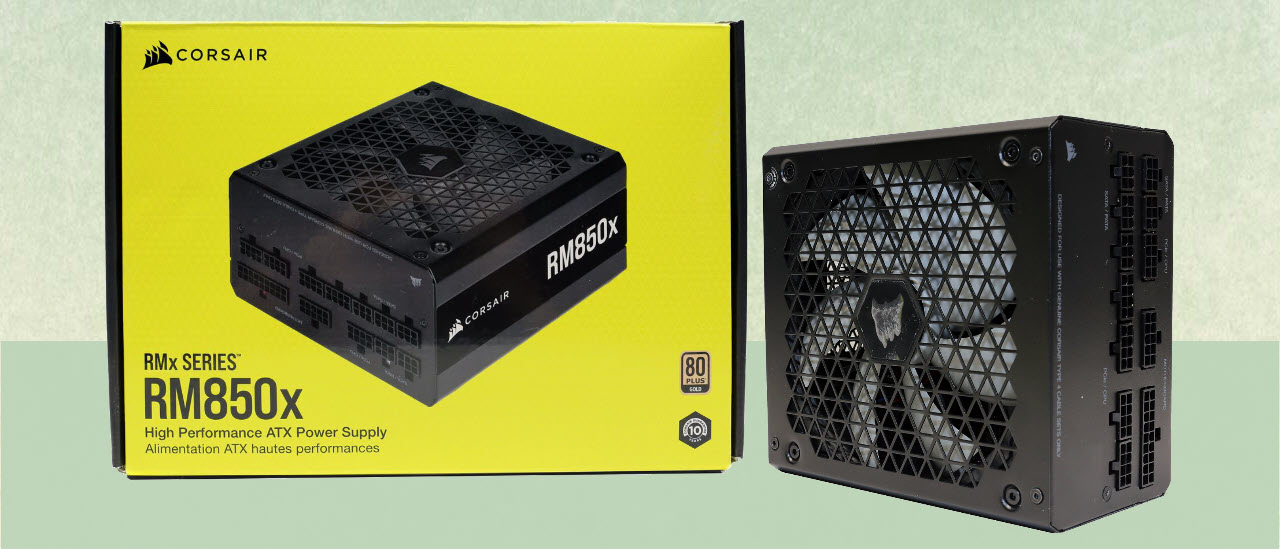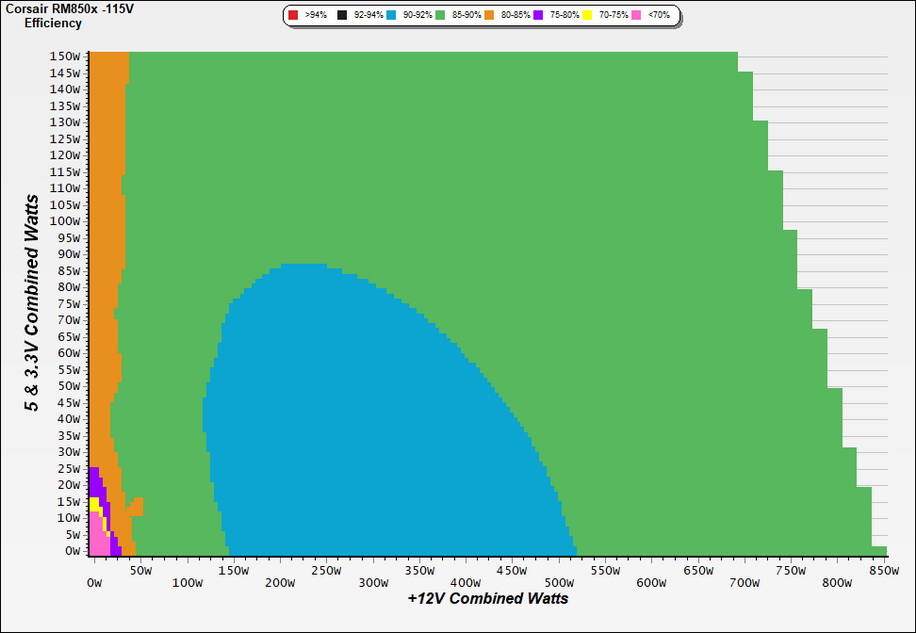Why you can trust Tom's Hardware
Protection Features
Check out our PSUs 101 article to learn more about PSU protection features.
|
OCP (Cold @ 25°C) |
12V: 87.2A (123.16%), 11.879V |
|
OCP (Hot @ 43°C) |
12V: 87.4A (123.45%), 11.9V |
|
OPP (Cold @ 28°C) |
1049.07W (123.42%) |
|
OPP (Hot @ 45°C) |
1053.31W (123.92%) |
|
OTP |
✓ (140°C @ 12V Heat Sink) |
|
SCP |
12V to Earth: ✓ |
|
PWR_OK |
Proper operation |
|
NLO |
✓ |
|
SIP |
Surge: MOV |
Over power protection is adequately set, and the same goes for the OCP at 12V. On the contrary, OCP is highly set on the minor rails for no reason. Lastly, all other protection features are present and work well.
DC Power Sequencing
According to Intel’s most recent Power Supply Design Guide (revision 1.4), the +12V and 5V outputs must be equal to or greater than the 3.3V rail at all times. Unfortunately, Intel doesn't mention why it is so important to always keep the 3.3V rail's voltage lower than the levels of the other two outputs.
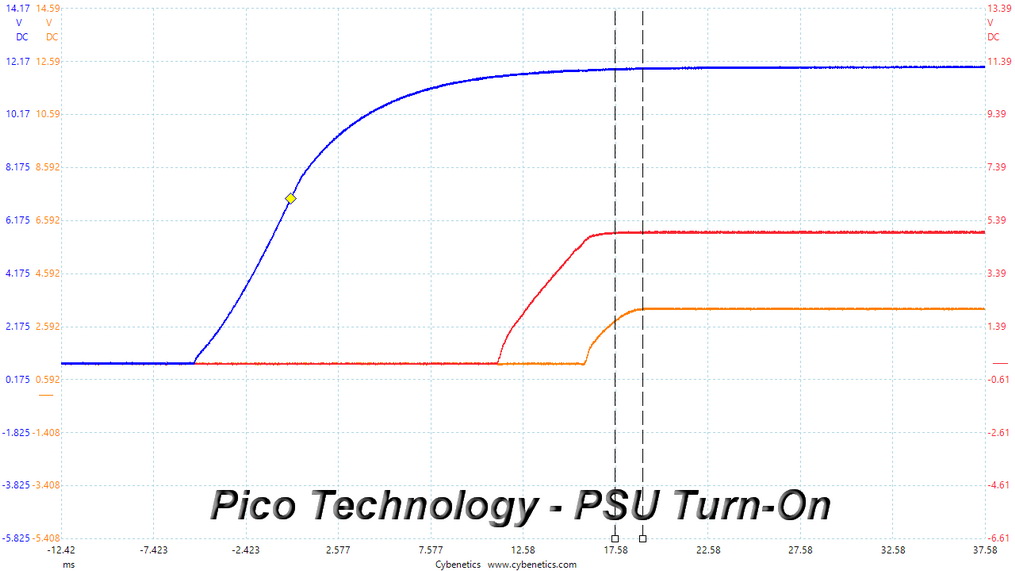
DC Power Sequencing Scope Shots
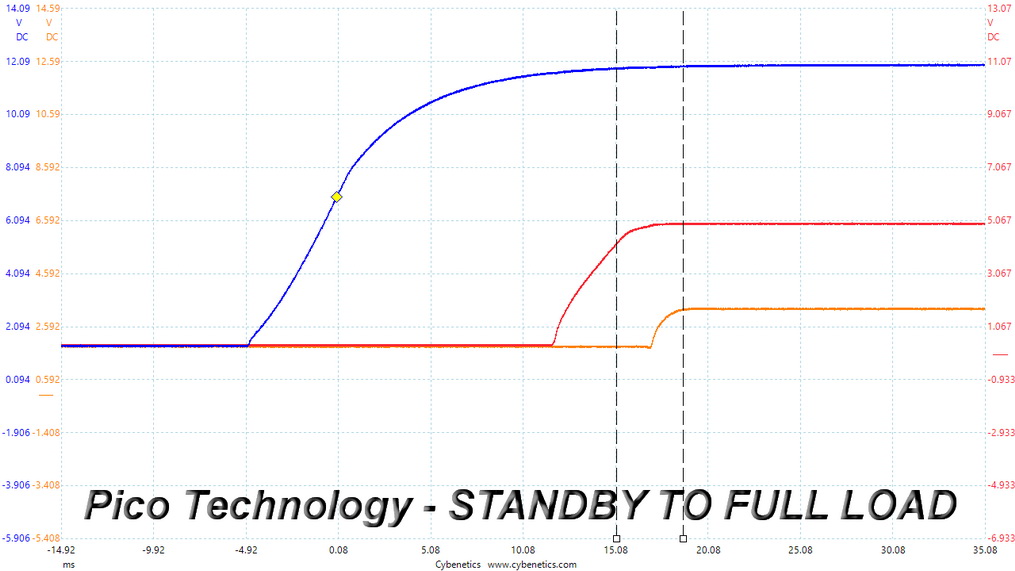
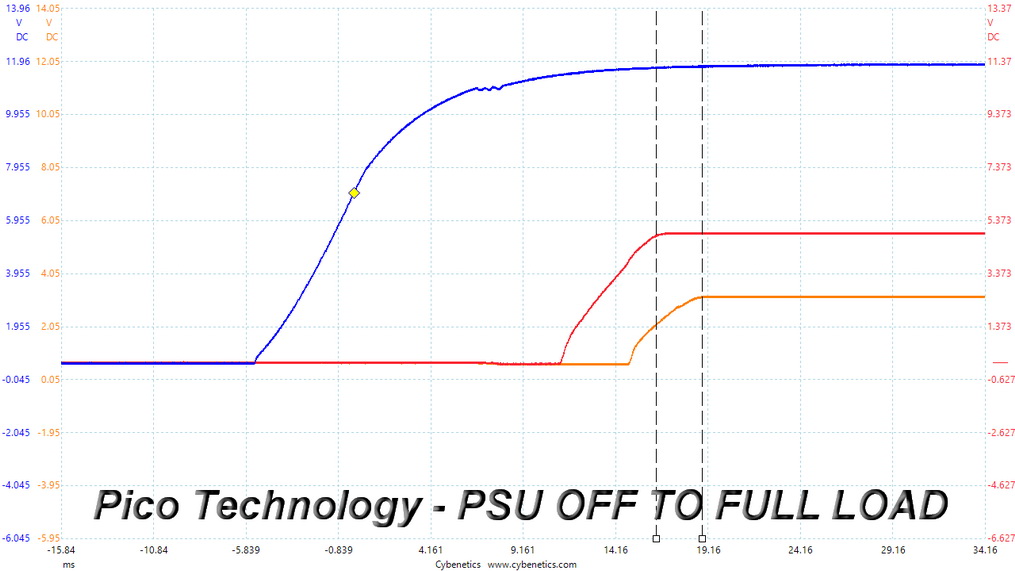
The 3.3V rail is always lower than the other two, so there is no problem according to the ATX spec's requirements.
Cross Load Tests
To generate the following charts, we set our loaders to auto mode through custom-made software before trying more than 25,000 possible load combinations with the +12V, 5V, and 3.3V rails. The deviations in each of the charts below are calculated by taking the nominal values of the rails (12V, 5V, and 3.3V) as point zero. The ambient temperature during testing was between 30 to 32 degrees Celsius (86 to 89.6 degrees Fahrenheit).
Load Regulation Charts
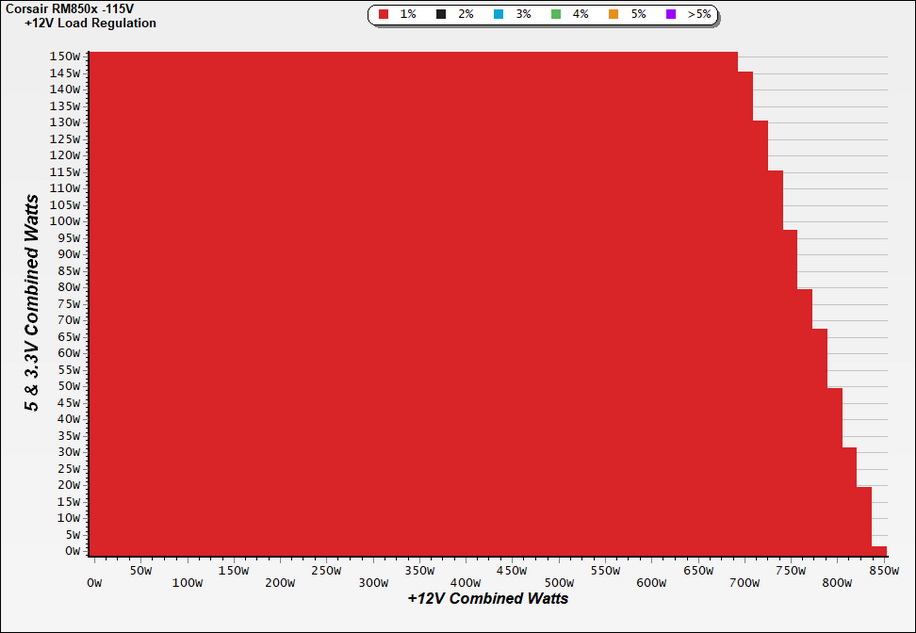
Load Regulation Graphs
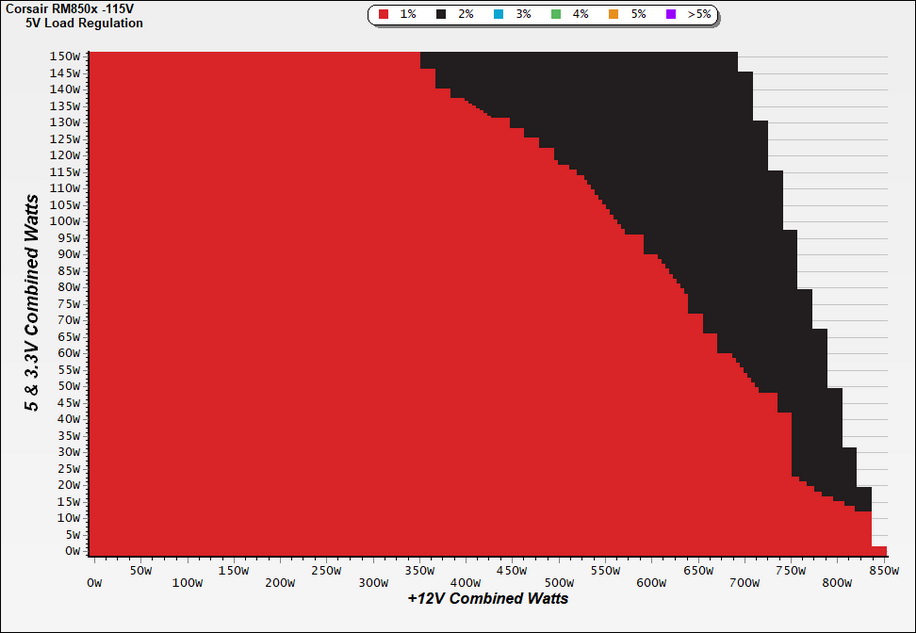
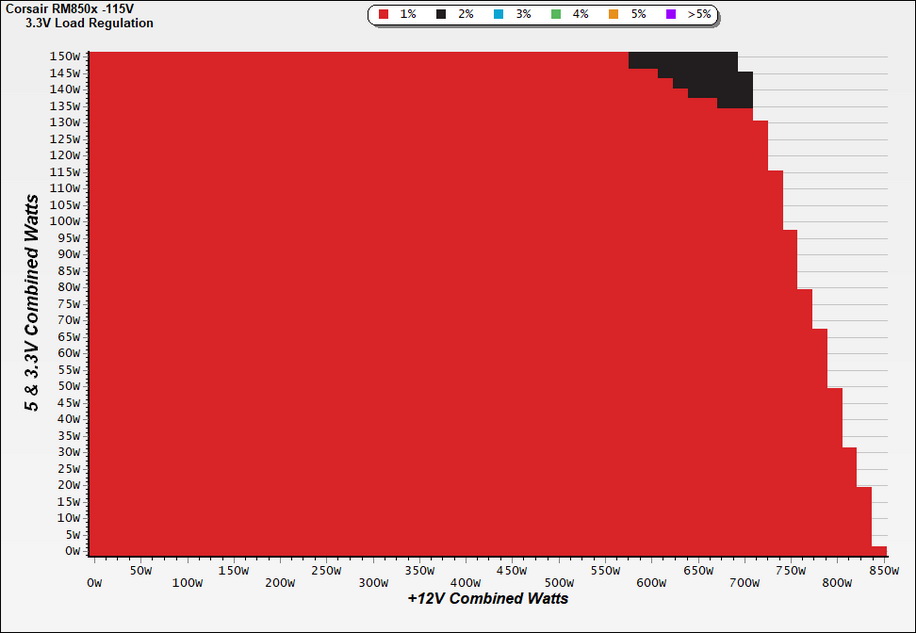
Efficiency Graph
Ripple Graphs
The lower the power supply's ripple, the more stable the system will be and less stress will also be applied to its components.
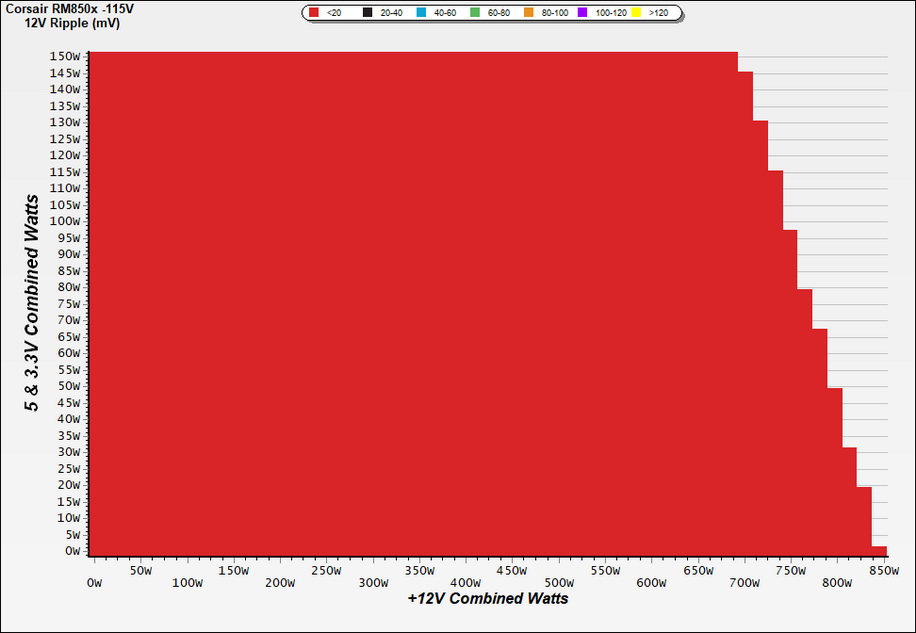
Ripple Suppression Graphs
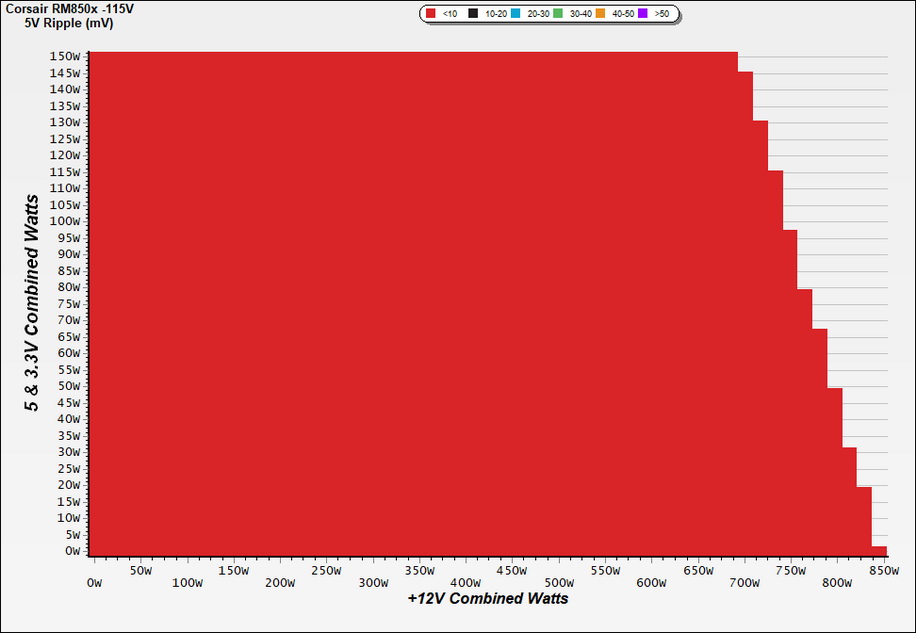
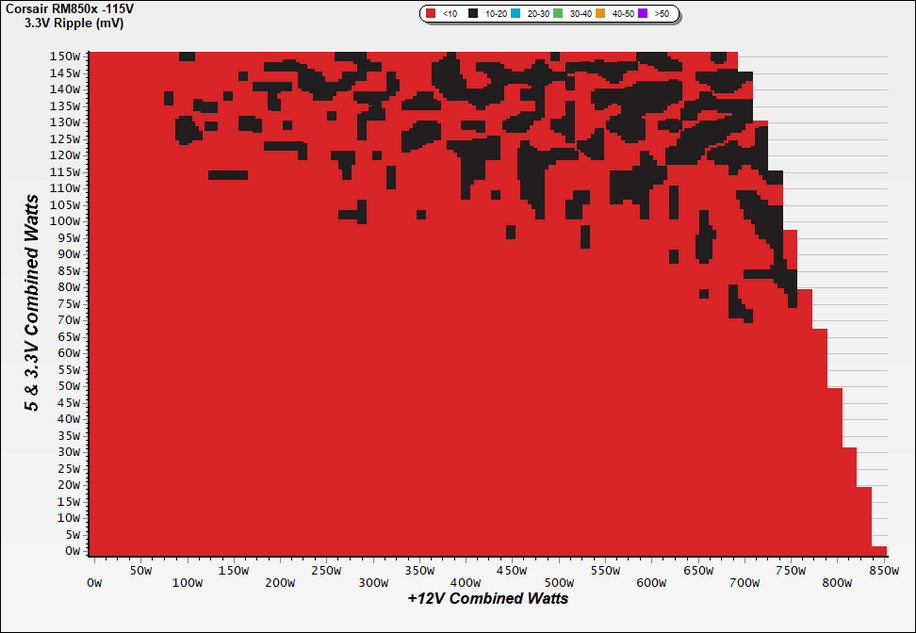
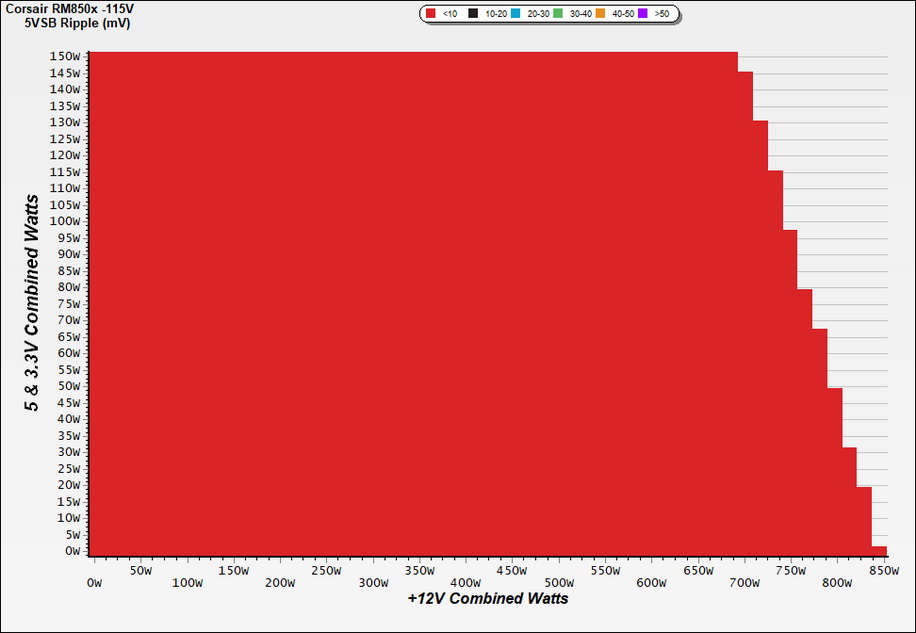
Infrared Images
We apply a half-load for 10 minutes with the PSU's top cover and cooling fan removed before taking photos with a modified FLIR E4 camera able to deliver an IR resolution of 320x240 (76,800 pixels).
Get Tom's Hardware's best news and in-depth reviews, straight to your inbox.
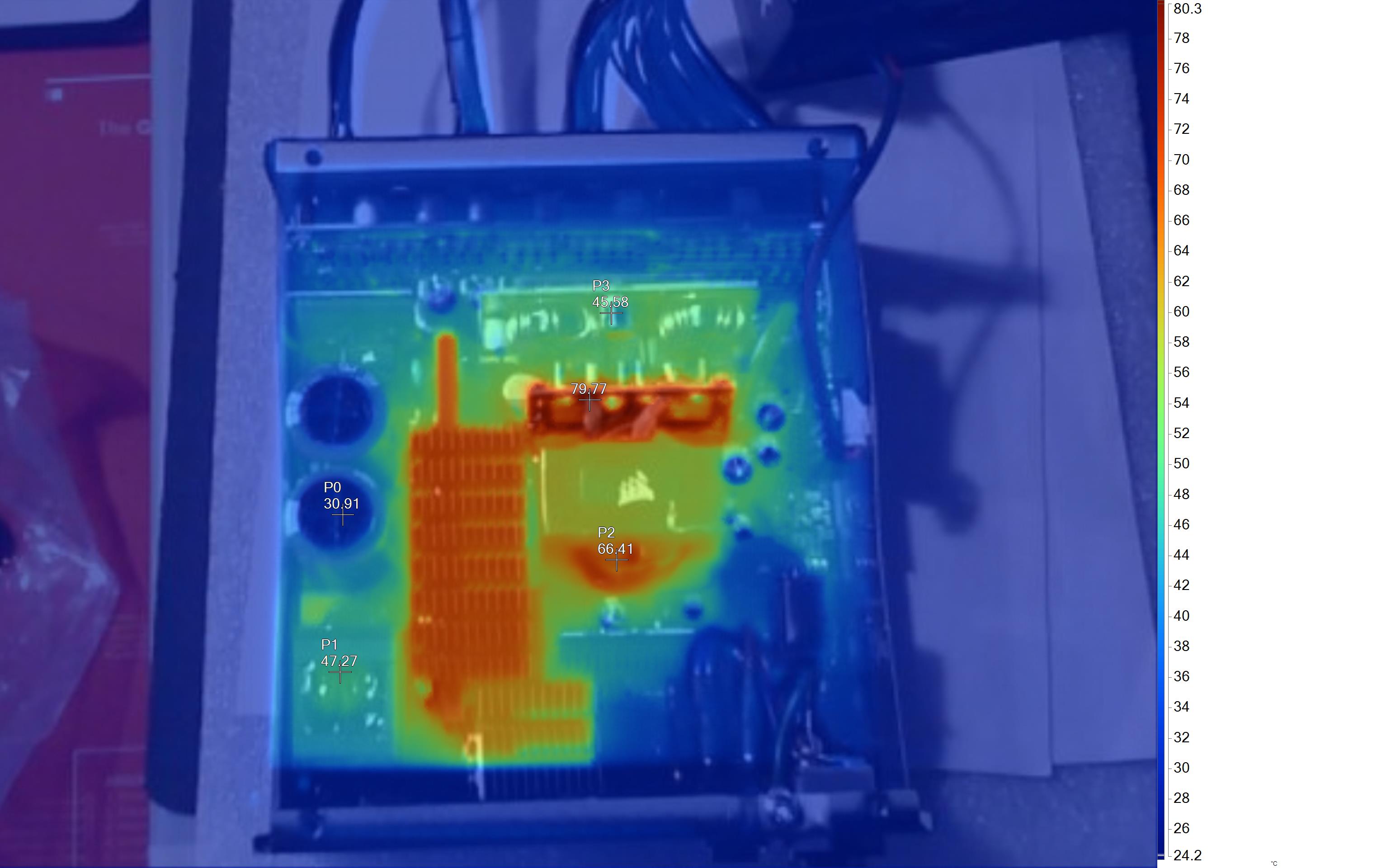
IR Images
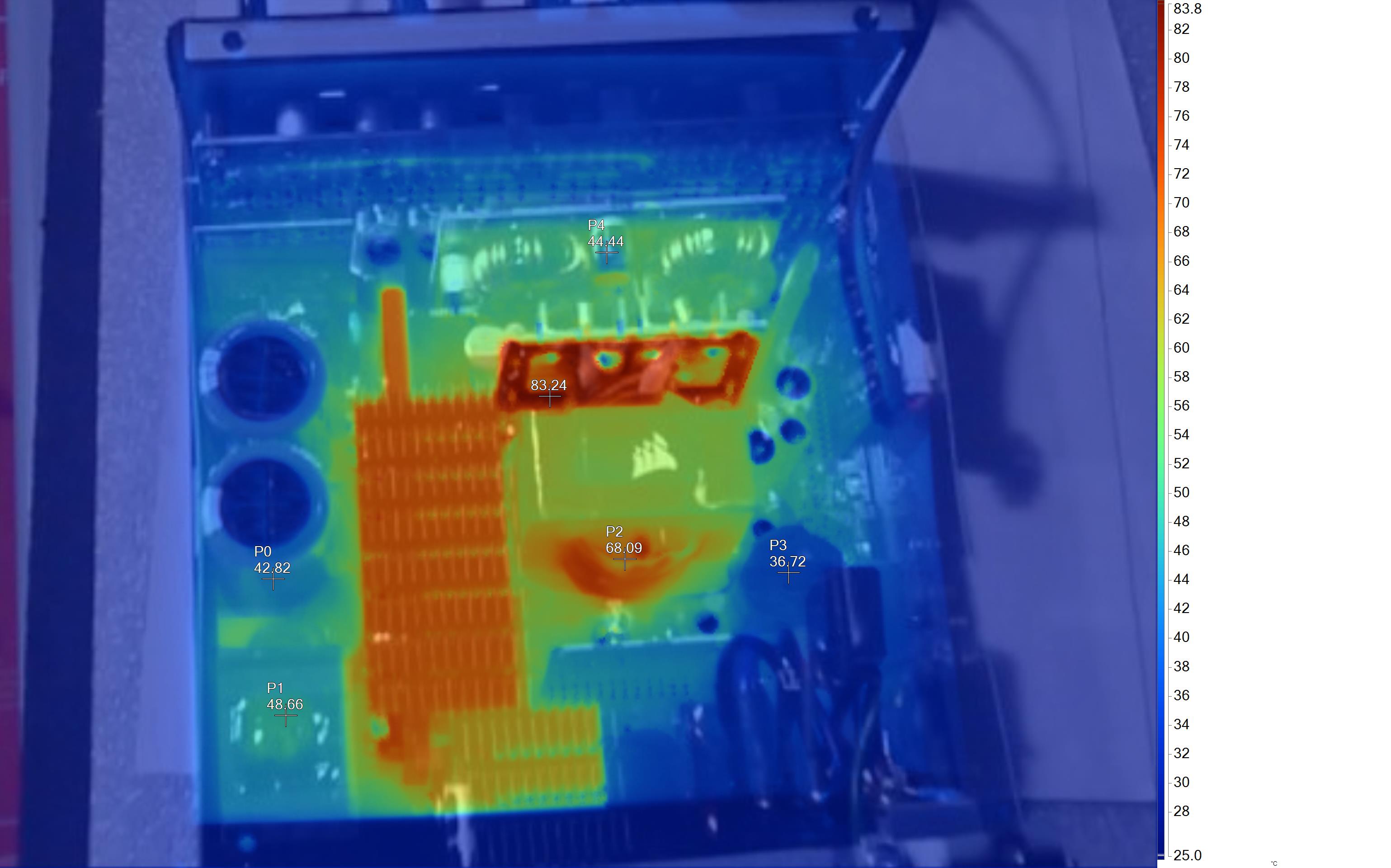
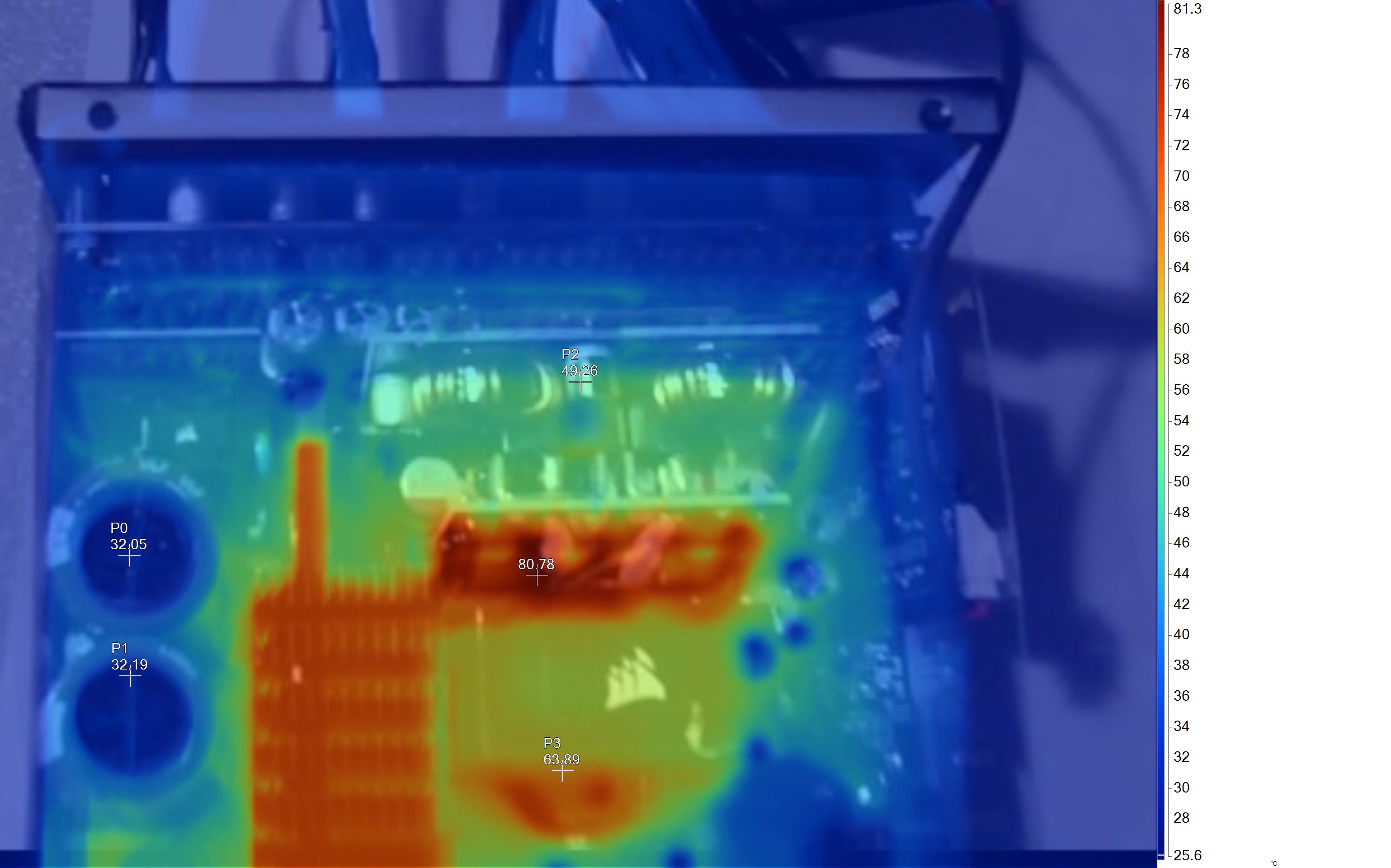
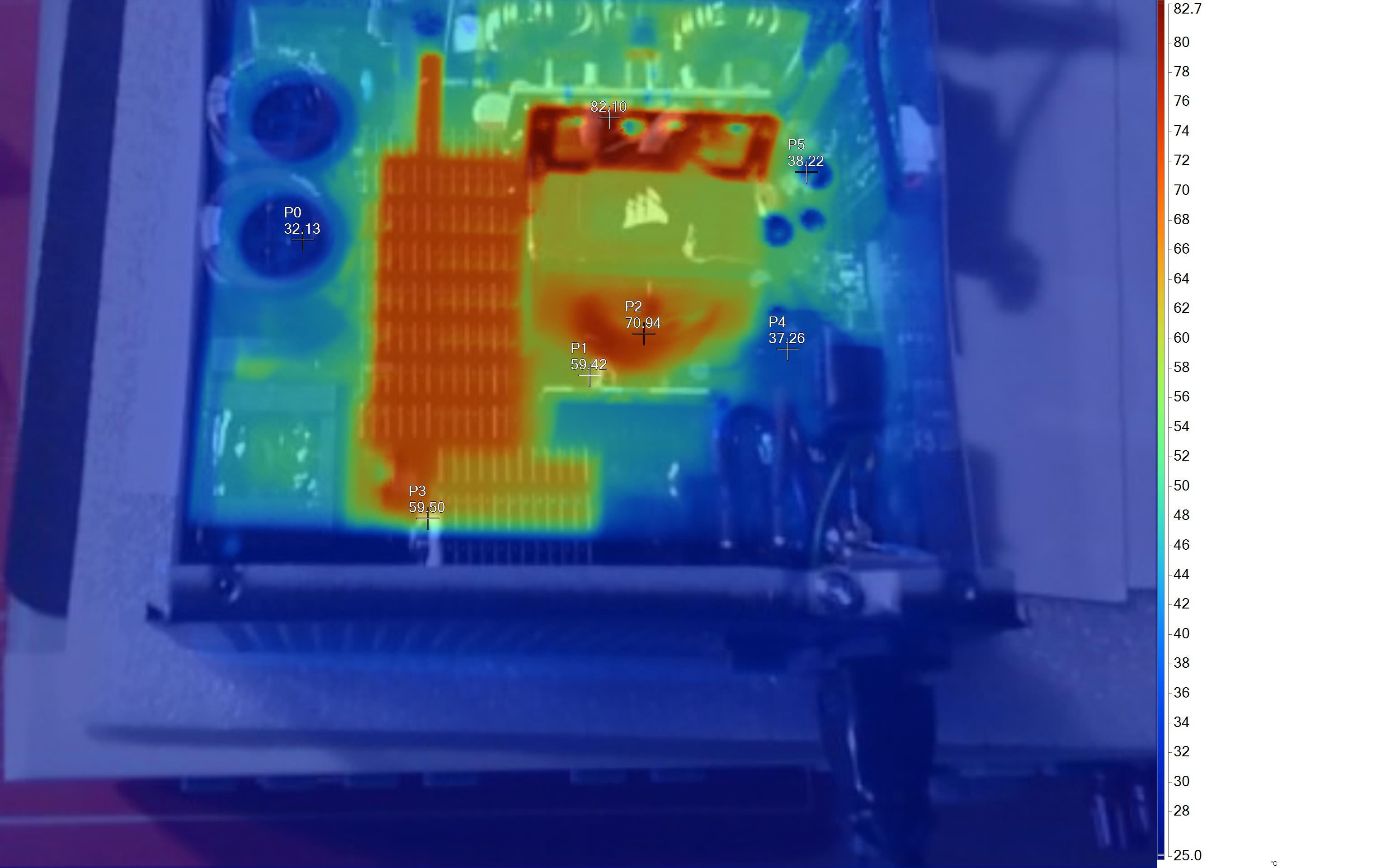
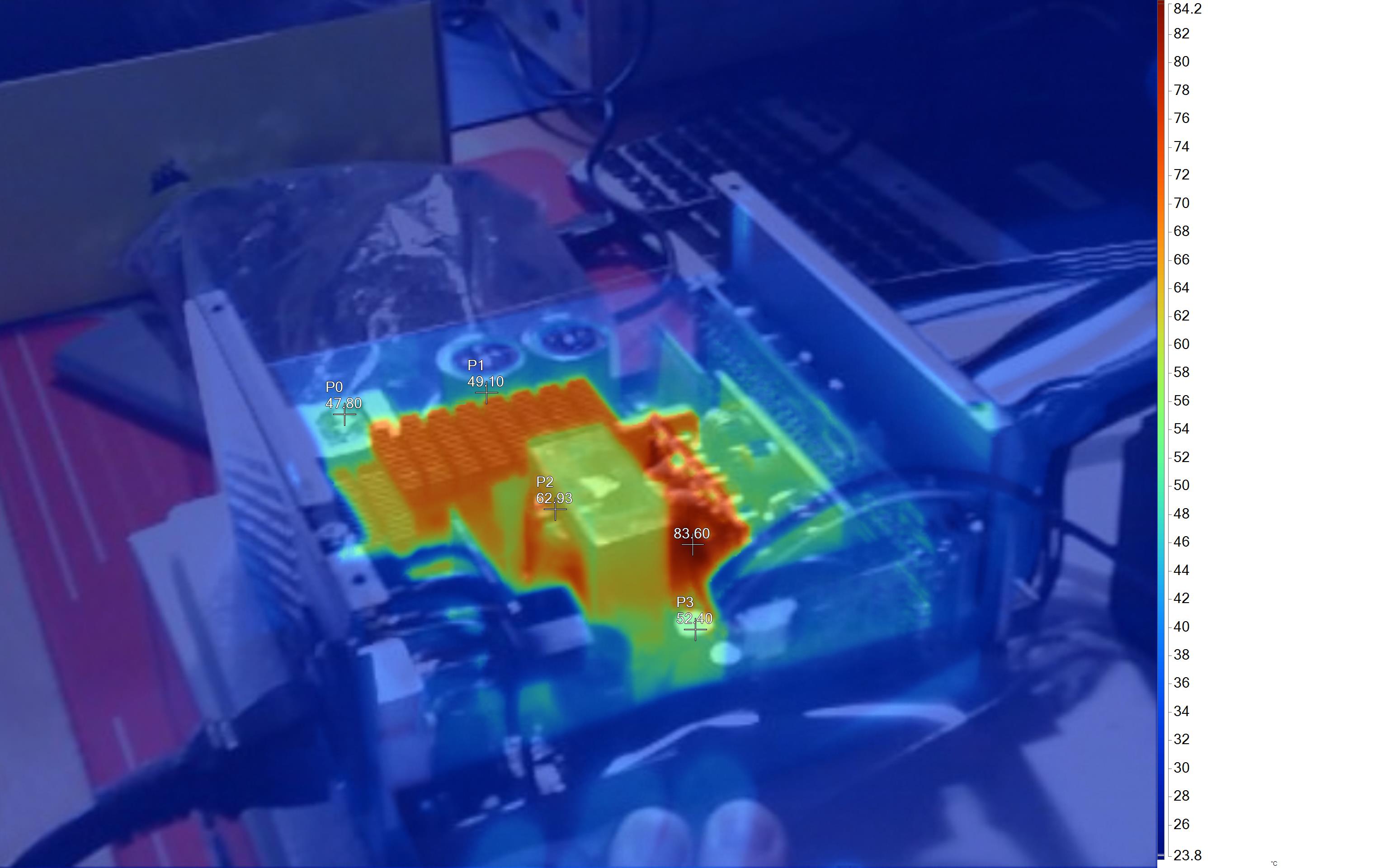
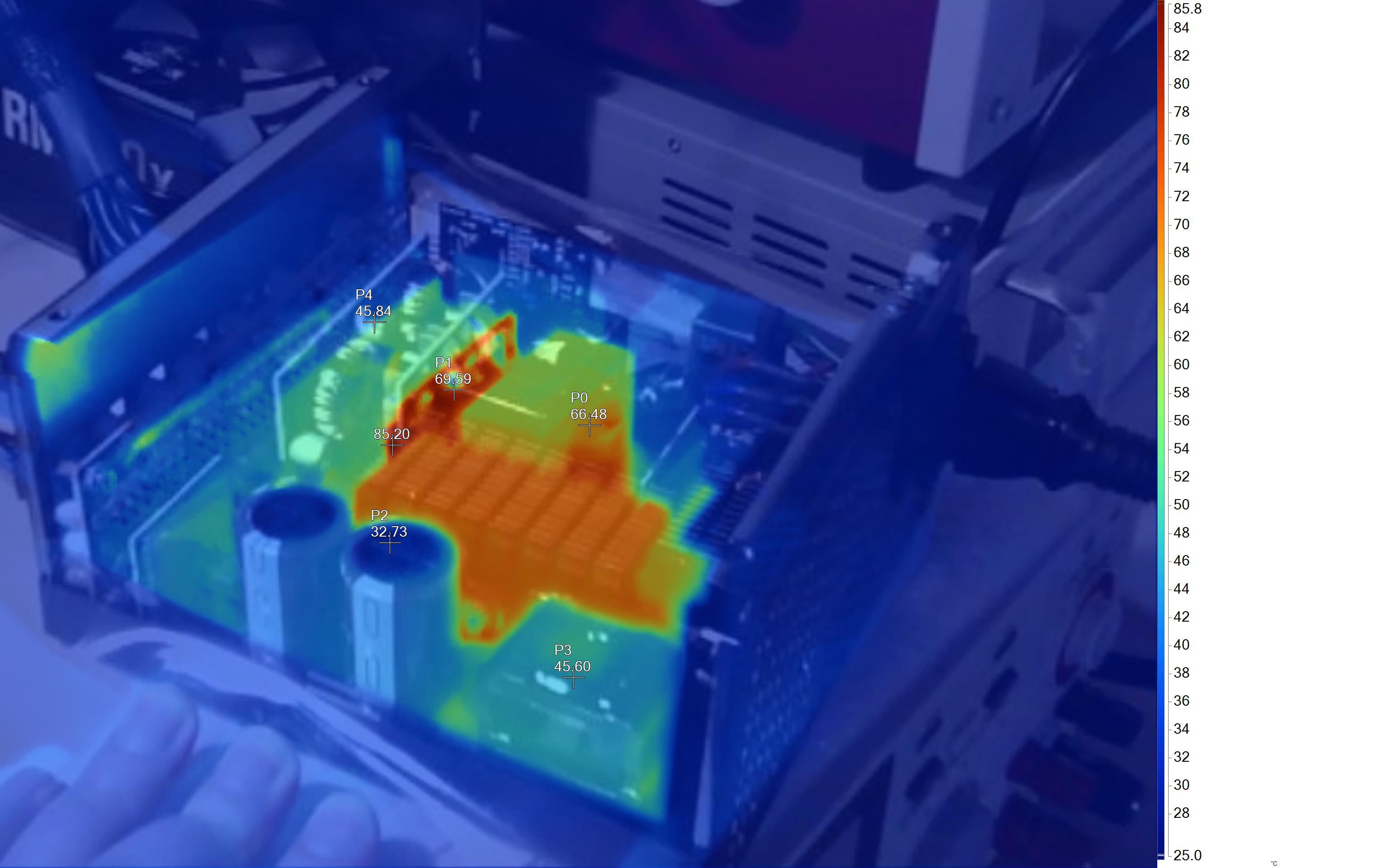
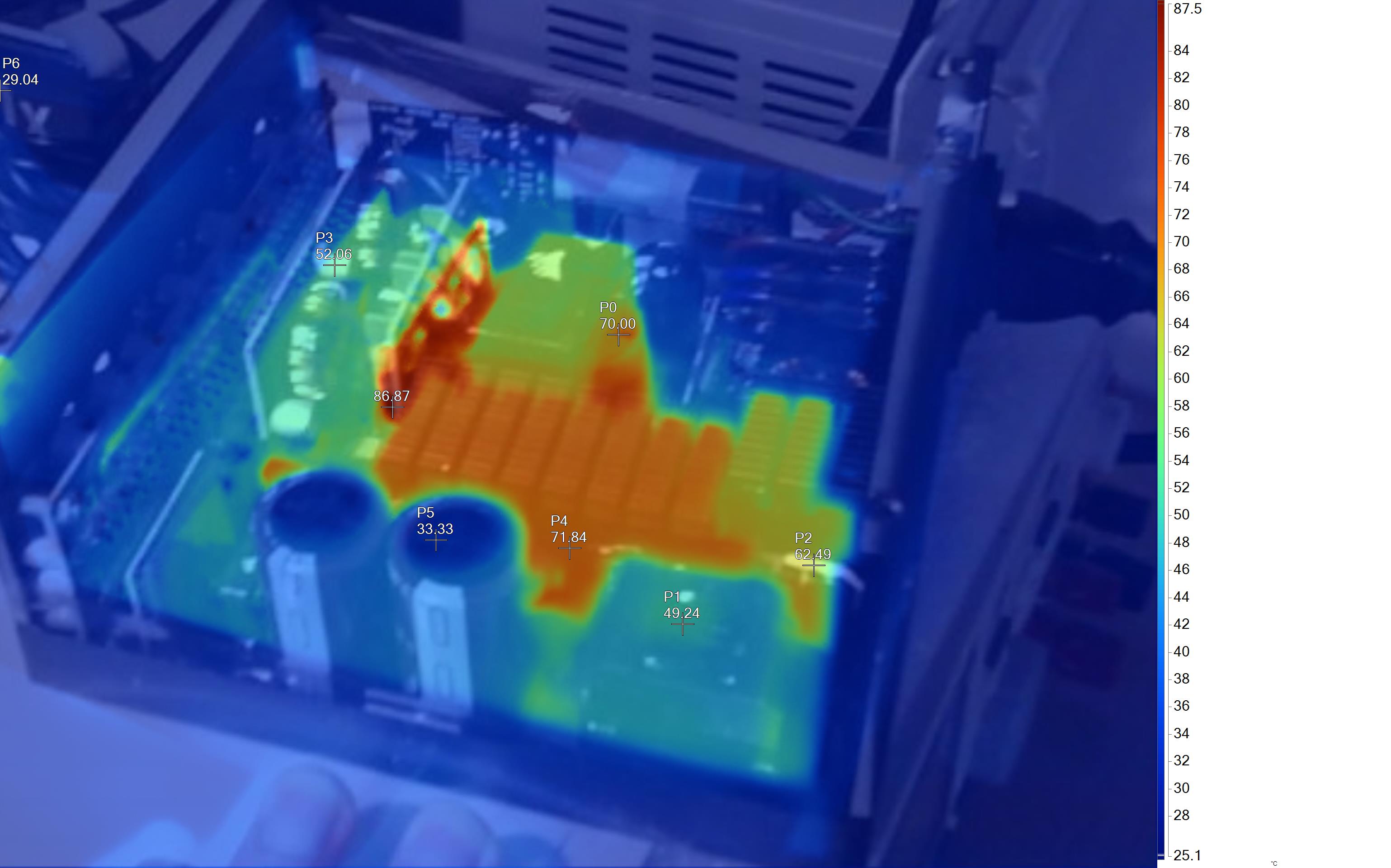
The heat sinks on the board that hosts the 12V FETs are the hottest part, with the main transformer following. Still, the operating temperatures are kept low.
MORE: Best Power Supplies
MORE: How We Test Power Supplies
MORE: All Power Supply Content
Current page: Protection Features, DC Power Sequencing, Cross-Load Tests and Infrared Images
Prev Page Load Regulation, Hold-Up Time, Inrush & Leakage Current, Efficiency and Noise Next Page Transient Response Tests, Timing Tests, Ripple Measurements and EMC Pre-Compliance Testing
Aris Mpitziopoulos is a contributing editor at Tom's Hardware, covering PSUs.
-
Isokolon shame they changed the fan. the 2015 & 2018 RMx were so great for low-noise enthusiasts.Reply
how the review classifies an almost 30db unit as "quiet" is beyond me. -
Udyr What makes this unit better than the Toughpower GF1?Reply
https://www.tomshardware.com/reviews/thermaltake-toughpower-gf1-850w-power-supply -
jsz031 Hi Aris.. like your reviews..Reply
small question. I noticed the Bulk/hold up caps get higher with wattage. can you explain how this impacts a general PSU?
for example/off topic, I have a 5 year old 550w G2 and it has a 400v 470uf cap. Just purchased a 550w g3 and the cap is lower capacity @ 400v 390uf.
Does this mean anything or am I overthinking it? is the 550w g2 better than "base" spec? I understand leakage can occur over time, I'm just not sure if its a downgrade or upgrade in specific areas.
thank you. -
jayjr1105 Reply
As long as they are meeting the ATX spec of 17ms hold up time, it doesn't really matter. The G2 was probably overkill so they cut costs by going with a lower capacity one.jsz031 said:Hi Aris.. like your reviews..
small question. I noticed the Bulk/hold up caps get higher with wattage. can you explain how this impacts a general PSU?
for example/off topic, I have a 5 year old 550w G2 and it has a 400v 470uf cap. Just purchased a 550w g3 and the cap is lower capacity @ 400v 390uf.
Does this mean anything or am I overthinking it? is the 550w g2 better than "base" spec? I understand leakage can occur over time, I'm just not sure if its a downgrade or upgrade in specific areas.
thank you. -
tomkawal Reply
..and worst quality coming from production line! Mine was covered with thick layer of metal salts from soldering. It stopped turning on. Works again after thorough cleanup.Admin said:The new Corsair RM850x is among the best PSUs in its category.
Corsair RM850x (2021) Power Supply Review : Read more -
tomkawal Beautifully presented. I was not so lucky with the unit I got, which stopped working after a month. Sent back to eBuyer guys and received it again not fixed (generally they requested ALL cables where I wanted only brick swap - this is totally unacceptable for me when the wires are in place tied to enclosure!) Raised ticket with Corsair with no answer in 2 days. Fixed on my own with one hour of cleaning the PCB from thick layer of soldering flux on the bottom side of PCB which caused leakage currents all over the board. Now it works. Horrendous experience and I don't recommend none of these businesses.Reply
